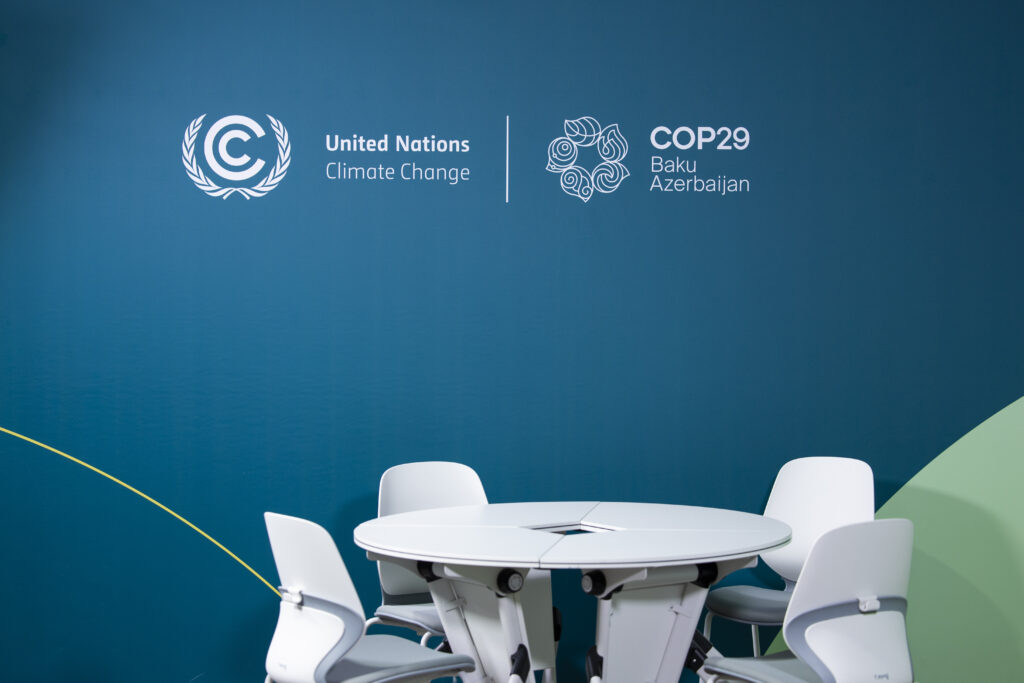The realm of international climate finance, particularly as it evolves during COP29, remains riddled with systemic challenges, stuck making poor progress financing climate transitions since COP 21. Despite ambitious goals set under the Paris Agreement and beyond, the mechanisms to mobilize and allocate funds equitably and effectively are fraught with mismanagement, inconsistencies, and a lack of transparency. This issue is critical as developing nations, often on the front lines of climate impacts, rely on financial support to adapt, mitigate risks, and transition to low-carbon economies. This article explores reasons underpinning the inefficiencies of international climate finance, dividing the discussion into key thematic sections: systemic shortcomings, accountability challenges, and potential solutions for reform.
Systemic Shortcomings in Climate Finance
Climate finance is intended to support vulnerable nations in mitigating and adapting to climate change, yet systemic flaws plague its implementation. Developed nations frequently fall short of their pledges, or worse, fulfill them through accounting maneuvers rather than new investments. For instance, the $100 billion annual commitment made at COP15 in 2009 was not met until 2022, two years past its deadline. Moreover, much of this achievement relied on relabeling existing foreign aid as climate finance, undermining the principle that funds should be “new and additional” to existing support. This practice deprives developing countries of genuinely incremental resources and risks inflating donor country achievements on paper while failing to deliver meaningful on-the-ground support.
Adding to this, the distribution mechanisms are fragmented and inefficient. Developed nations channel funds through a complex web of bilateral agreements, multilateral institutions, and private sector partnerships, each with its own set of criteria and priorities. The absence of a unified framework leads to overlaps, delays, and significant transaction costs, further eroding the efficacy of available funds.
Accountability and Governance Challenges
Another major issue is the lack of robust governance and accountability frameworks within climate finance. Developing nations often have limited oversight over how funds are allocated and spent. Reports suggest that a substantial portion of climate finance is delivered as loans rather than grants, further indebting already economically vulnerable nations. This approach contradicts the core purpose of climate finance as a compensatory mechanism for countries least responsible for, but most affected by, climate change.
Transparency is another critical shortfall. For example, donor nations often fail to provide comprehensive breakdowns of their financial contributions, leaving the recipients in the dark about the actual resources available. Additionally, discrepancies in reporting standards among donor countries and institutions further obscure the true scale and impact of climate finance. The lack of a universally accepted framework for monitoring and verifying financial flows makes it difficult to hold stakeholders accountable or measure the effectiveness of projects funded under these schemes.
Opportunities for Progress: What About Involving Beneficiaries Indeed?
Amidst these challenges, there is a growing consensus on the need for a systemic overhaul of the international climate finance architecture. First, stakeholders must prioritize the establishment of a centralized, transparent framework to track financial flows. This would involve standardizing reporting practices and ensuring that all climate finance is verified as new and additional, rather than repurposed aid. Such reforms could build trust between donor and recipient countries and foster more effective collaboration.
Another critical reform involves rethinking the composition of climate finance. Shifting the balance from loans to grants would alleviate the debt burden on vulnerable nations and align financial flows with the principle of climate justice. Furthermore, enhancing the role of multilateral institutions like the Green Climate Fund, with clear mandates and governance structures, could streamline funding processes and ensure resources are directed where they are most needed.
Finally, and perhaps the most achievable progress of all: Fostering greater involvement of recipient countries in decision-making processes could enhance the alignment of projects with local needs and priorities. Developing nations must have a more significant say in designing, implementing, and monitoring projects funded by international climate finance. In most instances, recipient countries are best positioned to understand whether and how finance can provide long term mitigative benefits in view of their local social challenges in a fast growing climate constrained environment.
Conclusion
International climate finance is at a critical juncture at COP29, and as COP 30 approaches, with its shortcomings increasingly under scrutiny. Addressing the systemic inefficiencies, improving transparency and accountability, and introducing comprehensive reforms are essential to transform the sector into an effective tool for global climate action. The road ahead demands collaborative efforts from all stakeholders to ensure that the funds genuinely support those who need them most, creating a more equitable and resilient global response to climate change. Ksapa is working on these issues at several levels.
- Already, Ksapa is assisting various financial players in adapting their products and engagement activities with assets and customers to better reflect these imperatives.
- Ksapa is also operating under MOU with several governments. This helps to design and deploy concrete programs accelerating decarbonization with climate finance whilst closely reflecting interests and perspectives provided by recipient countries
- In addition, Ksapa organizes and leads stakeholder engagement activities, using specific tools to ensure that the most vulnerable bangs of local communities are properly taken into account, so as to organize territorial fair-transition schemes.
- Lastly, Ksapa deploys a range of programs designed to boost local income generation, build resilience and enable local stakeholders to adapt to new local climatic conditions. All money cannot come from global finance. The more climate finance boosts a local economy that is more resilient and adapted to climate constraints, the more recipient countries can make the transition socially acceptable – and this is one of the success factors ensuring effective climate transition.
Contact us to find out more! contact@ksapa.org
Free picture COP 29 Media Gallery
Author of several books and resources on business, sustainability and responsibility. Working with top decision makers pursuing transformational changes for their organizations, leaders and industries. Working with executives improving resilience and competitiveness of their company and products given their climate and human right business agendas. Connect with Farid Baddache on Twitter at @Fbaddache.






